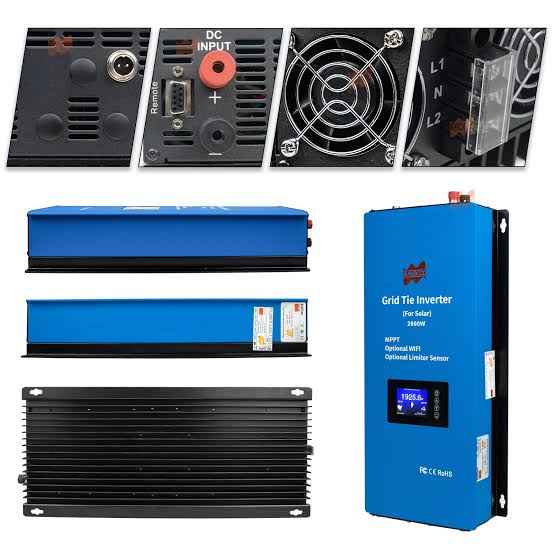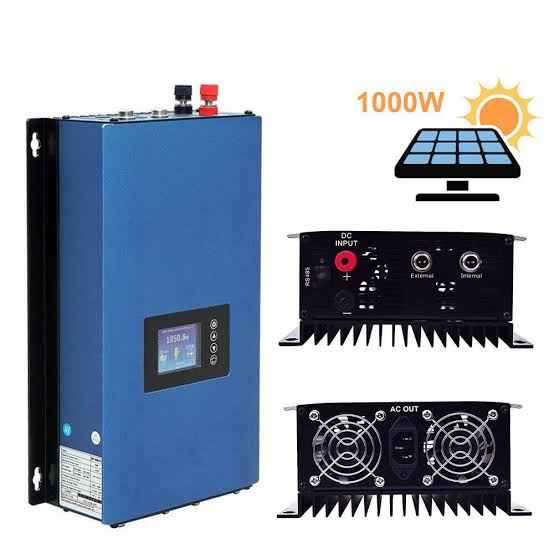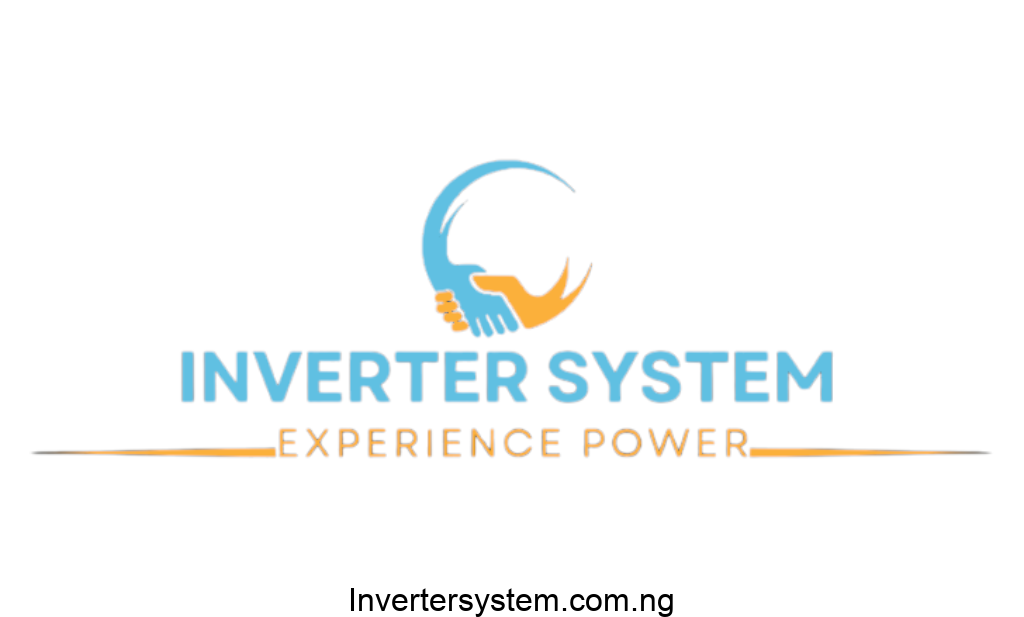Solar Inverters for Commercial vs Residential Use: Key Differences

As the adoption of solar energy continues to rise, understanding the distinctions between commercial and residential solar systems has become increasingly important. The heart of any solar power system lies in the solar inverter—a critical component that converts the direct current (DC) generated by solar panels into alternating current (AC) used by most electrical devices.
However, not all inverters are created equal, and the differences between those used in commercial versus residential settings can significantly impact the efficiency, cost, and overall performance of a solar energy system. This article provides a thorough exploration of these differences, equipping you with the knowledge to choose the best solar solution for your specific needs; home or business.
Overview of Solar Inverters

1.1 What is a Solar Inverter?
A solar inverter is the key component that enables the use of solar-generated electricity in homes and businesses. It performs the essential function of converting the DC electricity produced by solar panels into AC electricity, which is compatible with the grid and most electrical devices. Inverters also play a role in monitoring system performance, ensuring safety, and maximizing energy harvest by adjusting the voltage and current from the panels.
There are different types of solar inverters, each with specific advantages:
- String Inverters: Common in both commercial and residential systems, string inverters connect a series of solar panels (a string) to a single inverter. They are cost-effective but can be less efficient if one panel underperforms due to shading or dirt.
- Microinverters: Attached to individual solar panels, microinverters convert DC to AC at the panel level. This increases system efficiency, especially in installations where panels may experience varying levels of sunlight.
- Central Inverters: Used mainly in large commercial projects, central inverters are similar to string inverters but can handle much larger arrays of panels, making them suitable for high-capacity installations.
- Power Optimizers: These devices work with string inverters to maximize the power output of each panel by adjusting the DC voltage before it reaches the inverter, improving overall efficiency.
1.2 How Solar Inverters Work in Solar Energy Systems
In both residential and commercial solar systems, the inverter is the heart of the energy conversion process. Solar panels capture sunlight and convert it into DC electricity. The inverter then converts this DC power into AC power, which can be used on-site or fed into the grid. The efficiency of this conversion process is vital; higher efficiency means more of the sun’s energy is harnessed for use.
In grid-tied systems, any excess electricity not used on-site can be sent back to the grid, often earning the system owner credits through net metering. In off-grid systems, the inverter works with a battery storage system to ensure a steady supply of electricity, even when solar generation is low.
Commercial Solar Inverters vs. Residential Solar Inverters

2.1 Key Differences in Design and Capacity
Commercial Solar Capacity vs. Residential Solar Capacity
The primary difference between commercial and residential solar systems lies in their scale. Commercial solar systems are designed to meet the higher energy demands of businesses, factories, and other large facilities. As such, they require solar panels with higher wattage and inverters that can handle larger power loads. These systems often include central inverters or multiple string inverters to manage the energy produced by extensive arrays of solar panels.
Residential Solar Panel Sizes and Wattage
Residential solar panels are typically smaller in size and wattage, optimized for the energy needs of a single household. The choice of inverter for residential systems often balances cost, efficiency, and ease of installation. Microinverters and power optimizers are common in residential setups due to their ability to maximize energy output from each panel, especially in locations with partial shading or non-optimal roof orientations.
2.2 Efficiency and Energy Yield
Commercial Solar Efficiency
Efficiency is a critical factor in the performance of both commercial and residential solar systems. However, in commercial installations, the stakes are higher due to the larger scale of investment and energy production. High-efficiency solar inverters and panels are often used in commercial systems to ensure maximum energy yield and a faster return on investment. Advanced monitoring and control systems are also employed to optimize performance and identify issues before they affect output.
Residential Solar Efficiency
Residential solar systems prioritize efficiency to reduce household energy costs and potentially achieve energy independence. While the efficiency of residential inverters may be slightly lower than their commercial counterparts due to scale and cost considerations, choosing the right inverter type can significantly impact the system’s overall performance. Microinverters and power optimizers are particularly effective in residential systems where panel shading or varying angles are a concern.
Impact on Solar System ROI
The efficiency of a solar system directly affects its return on investment (ROI). For commercial systems, achieving high efficiency can lead to substantial savings on energy costs, shorter payback periods, and a more favorable ROI. Residential systems, while generally offering smaller absolute returns, still provide significant financial benefits, particularly when combined with incentives and net metering.
2.3 Installation and System Design
Commercial Solar Installation
The installation of commercial solar systems is typically more complex than residential installations. Commercial systems often require custom design solutions to accommodate larger arrays and higher power requirements. Factors such as roof load capacity, structural integrity, and electrical infrastructure must be carefully considered. Additionally, commercial installations may involve higher voltages and more stringent safety regulations, requiring specialized equipment and expertise.
Residential Solar Installation
Residential solar installations are generally simpler, but still require careful planning to ensure optimal performance. Key considerations include roof orientation, shading, and space availability. The aesthetics of the installation may also be a factor for homeowners, influencing the choice of panel and inverter types. Residential systems are usually designed to be scalable, allowing homeowners to expand their system as their energy needs grow.
Solar System Design Considerations
Designing a solar system—whether for a commercial or residential application—requires a thorough assessment of energy needs, site conditions, and financial goals. In commercial systems, scalability and the ability to handle large loads are paramount. For residential systems, the focus is often on maximizing energy production within the available space and budget, while also considering the visual impact on the property.
Cost and Financing

3.1 Commercial vs. Residential Solar Systems Cost
Initial Investment
The cost of installing a solar system varies significantly between commercial and residential projects. Commercial systems typically involve a higher initial investment due to the larger scale, more extensive permitting and engineering requirements, and the need for more powerful inverters. However, the economies of scale can reduce the cost per watt for commercial systems, making them more cost-effective over time.
Long-term Financial Benefits
Despite the higher upfront costs, commercial solar systems offer significant long-term financial benefits. These include reduced energy costs, protection against rising utility rates, and potentially lucrative incentives. The larger scale of commercial systems also means that businesses can generate and save more energy, leading to a faster payback period and a more substantial ROI.
Residential Solar Systems Cost
Residential solar systems are generally more affordable upfront, with costs depending on the size of the system, the type of inverter, and the complexity of the installation. The financial benefits for homeowners include reduced electricity bills, increased property value, and eligibility for incentives like the federal investment tax credit (ITC).
3.2 Solar System Financing Options
Commercial Solar Leasing
Leasing is a popular option for businesses looking to adopt solar energy without the upfront costs. In a commercial solar lease, a third-party owner installs and maintains the solar system, while the business pays a fixed monthly fee for the energy produced. This arrangement allows businesses to enjoy the benefits of solar energy, including lower utility bills and reduced carbon footprint, without the capital expenditure associated with purchasing a system.
Residential Solar Leasing
Similarly, residential solar leasing allows homeowners to install solar panels with no upfront cost. Instead, they pay a monthly fee for the electricity generated by the system. Leasing can be an attractive option for homeowners who want the benefits of solar energy but prefer not to invest in purchasing a system outright. However, it’s important to consider the long-term implications, such as the potential reduction in savings compared to owning the system.
Community Solar Programs
For those who cannot install solar panels on their property—whether due to space, shading, or other restrictions—Community Solar Programs offer a viable alternative. In these programs, multiple customers share the benefits of a larger, centrally-located solar array. Participants receive credits on their electricity bills for their share of the energy produced, allowing them to enjoy the benefits of solar power without the need to install panels on their own property.
3.3 Incentives and Tax Credits
Commercial Solar Incentives
Businesses investing in solar can take advantage of various incentives to reduce the cost of installation and improve ROI. These include federal tax credits, such as the ITC, state and local rebates, and grants. Additionally, businesses can benefit from accelerated depreciation through the Modified Accelerated Cost Recovery System (MACRS), which allows for the rapid write-off of the investment in solar equipment.
Residential Solar Incentives
Homeowners also have access to several incentives that can make solar more affordable. The federal ITC allows homeowners to deduct a significant portion of their solar installation costs from their federal taxes. State and local incentives, as well as utility rebates, can further reduce the cost of going solar.
Net Metering and Feed-in Tariffs
Both commercial and residential solar systems can benefit from net metering and feed-in tariffs. Net metering allows solar system owners to sell excess electricity back to the grid, earning credits that can offset their electricity costs. Feed-in tariffs, though less common, guarantee a fixed payment for all electricity generated by the solar system and fed into the grid, providing a steady revenue stream over time.
Efficiency and Energy Output

4.1 How Efficient Are Commercial Solar Panels?
Efficiency Factors in Commercial Systems
Commercial solar panels are designed for maximum efficiency to meet the high energy demands of businesses. These panels often have a higher efficiency rating than residential panels, typically ranging from 18% to over 22%. Factors such as panel quality, installation angle, and maintenance play crucial roles in determining the overall efficiency of a commercial solar system.
Technology Enhancements
Advancements in solar technology have led to the development of more efficient commercial solar panels. Innovations such as bifacial panels, which capture sunlight on both sides, and the use of PERC (Passivated Emitter Rear Cell) technology, enhance the energy yield from each panel, making commercial systems more productive and cost-effective over their lifespan.
4.2 How Much Energy Can a Commercial Solar Panel Produce?
Energy Output by Commercial Panels
The energy output of commercial solar panels is typically much higher than that of residential panels. A single commercial solar panel can produce between 400 and 500 watts or more, depending on the make and model. The total energy output of a commercial solar system depends on the number of panels installed and the specific energy requirements of the business.
Factors Influencing Energy Production
Several factors influence the amount of energy a commercial solar system can produce, including the location, panel orientation, shading, and the efficiency of the inverters used. Businesses often conduct a thorough site assessment before installation to maximize energy production and ensure the system meets their needs.
4.3 How Efficient Are Residential Solar Panels?
Efficiency in Residential Systems
Residential solar panels typically have efficiency ratings between 15% and 20%. While slightly lower than commercial panels, they are sufficient to meet the energy needs of most homes. The efficiency of residential panels can be affected by factors such as roof angle, shading from trees or other structures, and the quality of the panels and inverters.
Importance of Proper Installation
Proper installation is critical to the efficiency of a residential solar system. Panels must be positioned to capture the maximum amount of sunlight throughout the day, and shading must be minimized. Homeowners may also consider using microinverters or power optimizers to boost the efficiency of their system, especially in less-than-ideal conditions.
4.4 Comparison: Commercial vs. Residential Energy Output
Energy Needs and System Size
The energy output of a solar system is closely tied to the energy needs it is designed to meet. Commercial systems, designed to power large buildings or operations, naturally produce more energy than residential systems, which are scaled to meet the needs of a single household. The size and number of panels in a commercial installation are significantly larger, leading to greater overall energy production.
Cost vs. Energy Output
While commercial solar systems require a larger initial investment, their greater energy output often leads to substantial long-term savings. In contrast, residential systems, though smaller and less expensive upfront, provide significant savings relative to the household’s energy consumption. Both types of systems can greatly reduce dependence on grid electricity and lower energy bills over time.
Maintenance and Monitoring
5.1 Maintenance Requirements for Commercial Solar Systems
Routine Maintenance Needs
Commercial solar systems, due to their size and complexity, require regular maintenance to ensure optimal performance. This includes cleaning the panels to remove dirt and debris, inspecting the wiring and connections, and checking the inverters for any issues. Businesses often enter into maintenance contracts with solar providers to ensure that their systems are regularly serviced and any issues are promptly addressed.
Monitoring and Performance Optimization
Advanced monitoring systems are often integrated into commercial solar installations to track performance in real time. These systems can detect inefficiencies or malfunctions early, allowing for quick intervention and minimizing downtime. Monitoring systems also provide valuable data that can be used to optimize the system’s performance over time.
5.2 Maintenance Requirements for Residential Solar Systems
Simpler Maintenance Tasks
Residential solar systems are generally easier to maintain than their commercial counterparts. Homeowners can often handle basic maintenance tasks themselves, such as cleaning the panels a few times a year to ensure they are free from dust and debris. Professional inspections are recommended annually to check for any potential issues with the system, especially the inverters and electrical connections.
Monitoring Tools for Homeowners
Many residential solar systems come with monitoring tools that allow homeowners to track their system’s performance from their smartphones or computers. These tools provide insights into energy production, system efficiency, and any potential issues that may need attention. While not as sophisticated as commercial monitoring systems, these tools are sufficient for ensuring the system operates effectively.
System Lifespan and Durability
6.1 Lifespan of Commercial Solar Systems
Durability and Longevity
Commercial solar systems are built to last, with most components designed to operate efficiently for 25 to 30 years or more. The durability of the panels, inverters, and mounting structures is crucial in commercial settings, where downtime can result in significant financial losses. High-quality commercial solar panels often come with warranties that cover performance and durability for several decades.
Planning for Long-term Performance
Businesses investing in solar energy need to consider the long-term performance of their systems. Regular maintenance, paired with quality components, ensures that the system will continue to generate energy efficiently throughout its lifespan. Planning for upgrades or expansions as technology improves can also help businesses maximize the return on their solar investment.
6.2 Lifespan of Residential Solar Systems
Typical Lifespan and Warranties
Residential solar systems also boast a long lifespan, typically around 25 years. The longevity of a residential system depends on the quality of the installation and components. Most solar panels come with warranties that guarantee performance for 20 to 25 years, ensuring that homeowners can rely on their solar systems to reduce energy costs for decades.
Maintaining System Efficiency Over Time
Over the years, the efficiency of solar panels can slightly degrade, leading to a small reduction in energy output. However, with proper maintenance and occasional upgrades, homeowners can maintain high levels of energy production throughout the system’s lifespan. Inverters, being electronic devices, may need replacement once or twice during the system’s life, depending on their type and quality.
7. Choosing the Right Solar System for Your Needs
7.1 Factors to Consider for Commercial Systems
Energy Demand and Usage Patterns
When selecting a commercial solar system, it’s essential to consider the specific energy needs of the business. This includes not only the current energy consumption but also potential future increases as the business grows. Understanding the usage patterns can help in designing a system that efficiently meets these needs without oversizing, which could lead to unnecessary costs.
Financial Goals and ROI Expectations
Businesses need to weigh the initial investment against the expected financial returns from the solar system. This involves calculating the payback period, potential savings on energy costs, and any additional revenue from selling excess power back to the grid. Government incentives and tax credits can also significantly impact the ROI of commercial solar systems.
Space and Structural Considerations
The physical space available for installing solar panels is another critical factor. Commercial buildings often have large, flat roofs that are ideal for solar installations, but ground-mounted systems may also be an option if roof space is limited. Structural assessments are necessary to ensure that the roof or mounting structure can support the weight of the solar panels.
7.2 Factors to Consider for Residential Systems
Home Energy Needs and Goals
Homeowners should start by evaluating their energy consumption and goals when considering a solar system. Do they want to offset 100% of their electricity usage, or are they aiming for partial offset to reduce costs? The answers to these questions will guide the design and size of the solar system.
Budget and Financing Options
Residential solar systems offer various financing options, including purchasing outright, leasing, or entering into a power purchase agreement (PPA). Homeowners should explore all available options to find the one that best suits their financial situation. The potential savings, combined with available incentives and rebates, can make solar a financially viable option for many households.
Aesthetics and Home Value
For many homeowners, the appearance of their solar system is an important consideration. Some may prefer low-profile panels that blend in with the roofline, while others might prioritize performance over aesthetics. Additionally, installing a solar system can increase the value of a home, which is an important factor to consider if selling the property is a possibility in the future.
Future Trends in Solar Technology
8.1 Advances in Solar Inverters
Smart Inverters and Grid Interaction
One of the key trends in solar technology is the development of smart inverters. These inverters can interact more intelligently with the grid, helping to stabilize grid operations and enable more effective integration of renewable energy. Smart inverters can also offer advanced monitoring and diagnostic features, providing greater control and efficiency for both commercial and residential systems.
Hybrid Inverters for Solar Plus Storage
As battery storage becomes more affordable, hybrid inverters that can manage both solar generation and battery storage are gaining popularity. These inverters allow users to store excess solar energy for use during peak demand times or when solar generation is low. This technology is particularly appealing for homeowners and businesses looking to achieve greater energy independence.
8.2 Innovations in Solar Panel Technology
Bifacial Panels and Increased Efficiency
Bifacial solar panels, which capture sunlight on both sides, are becoming more common in commercial installations due to their higher efficiency. These panels can increase energy output by up to 30% compared to traditional single-sided panels, making them an attractive option for businesses looking to maximize their energy production.
Perovskite Solar Cells and Future Potential
Perovskite solar cells are an emerging technology that has the potential to revolutionize the solar industry. These cells are made from materials that are easier and cheaper to produce than traditional silicon-based cells, and they offer the promise of even higher efficiency. Although still in the experimental stage, perovskite solar cells could eventually lead to more affordable and efficient solar panels for both commercial and residential use.
8.3 The Integration of AI and IoT in Solar Systems
AI for Predictive Maintenance and Energy Management
Artificial Intelligence (AI) is increasingly being integrated into solar systems to optimize energy production and reduce downtime. AI algorithms can analyze weather patterns, energy consumption data, and system performance to predict when maintenance is needed or to adjust energy production in real-time. This leads to better system efficiency and longevity, especially in commercial settings where energy demands are high.
IoT for Smart Monitoring and Control
The Internet of Things (IoT) allows for the seamless integration of various components in a solar system, enabling real-time monitoring and control. IoT-enabled devices can communicate with each other and with a central management system, allowing for more precise control of energy flows, improved system efficiency, and enhanced user convenience. This technology is particularly useful in residential systems, where homeowners can monitor and manage their solar energy production and consumption from their smartphones or other devices.
8.4 The Role of Energy Storage in the Future of Solar Power
Battery Storage for Energy Independence
As battery technology advances and becomes more affordable, energy storage is becoming a crucial component of both commercial and residential solar systems. Battery storage allows users to store excess solar energy for use during non-sunny periods or at night, reducing reliance on the grid and providing energy security. For commercial systems, this can mean significant savings during peak demand times, while residential users can achieve greater energy independence.
Grid-Tied vs. Off-Grid Solutions
The growing popularity of energy storage is leading to more hybrid solar systems that can operate both on and off the grid. Grid-tied systems with battery backup allow users to continue operating during grid outages, while off-grid systems provide complete energy independence. As battery technology improves, these systems are expected to become more efficient and cost-effective, making them an attractive option for both businesses and homeowners.
Conclusion
Choosing the right solar inverter and system, whether for commercial or residential use, involves careful consideration of several factors, including efficiency, cost, system design, and maintenance. Commercial solar systems tend to be larger, more complex, and more expensive upfront, but they offer greater long-term savings and energy production capabilities. Residential systems, while smaller and often less costly, are tailored to meet the specific energy needs of homes and can significantly reduce household energy bills.
By recognizing the key differences between commercial and residential solar systems, including the types of inverters used, energy efficiency, cost implications, and available incentives, you can make an informed decision that aligns with your energy goals and financial capabilities. Whether you’re a homeowner looking to cut energy costs or a business aiming to enhance sustainability, the right solar solution is within reach.





